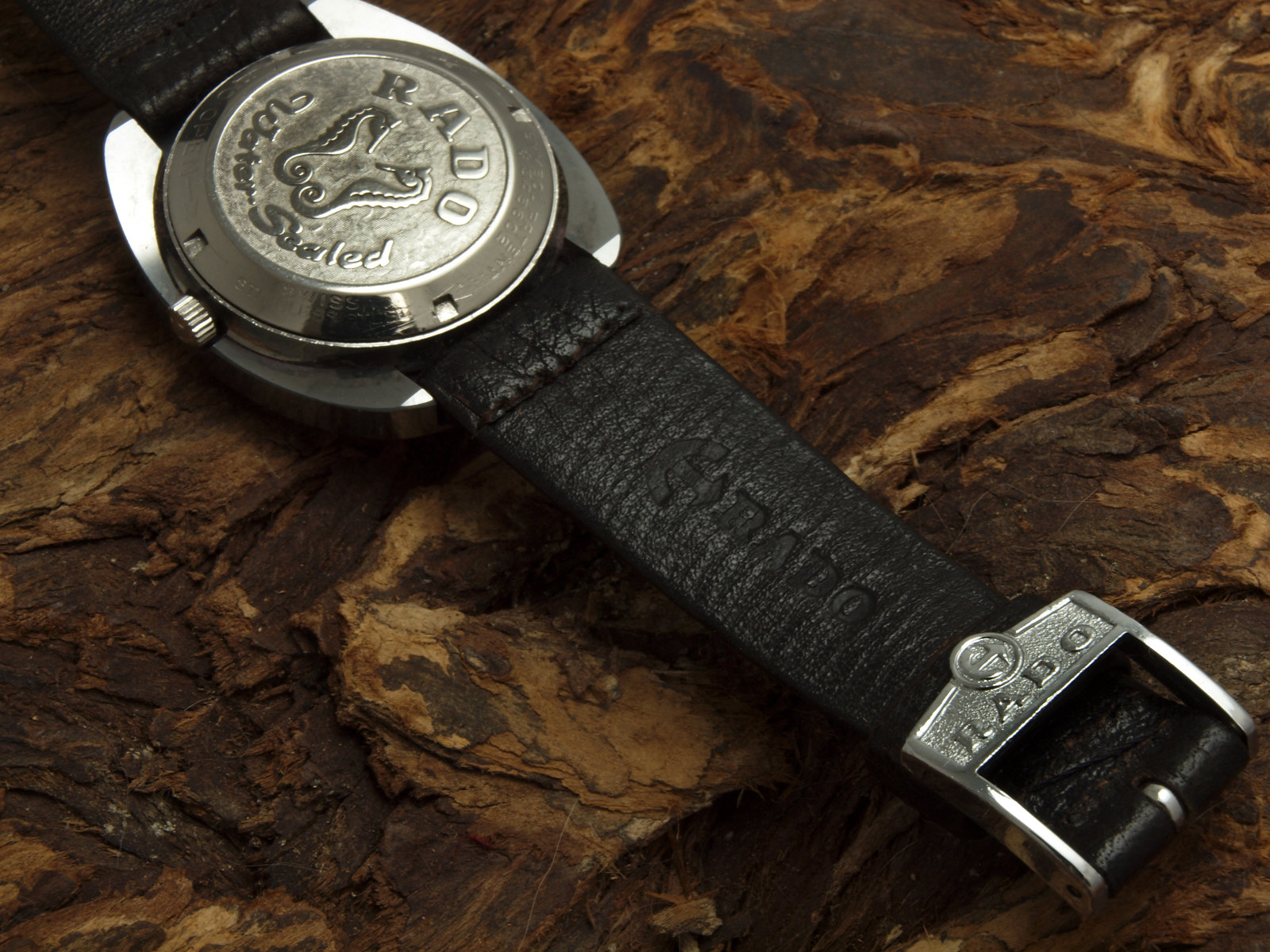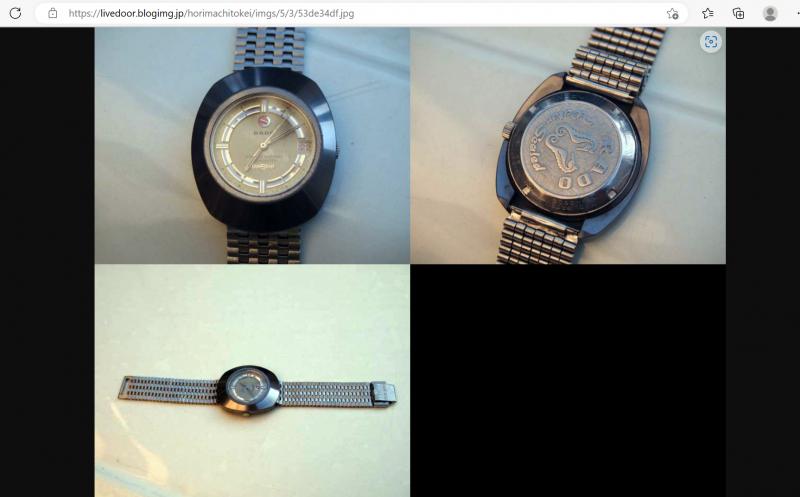-
Moderator


Vintage Diastar "0", 1 & 1/E Reference thread.
It may well be said that the classic Diastar 1 was the watch that put Rado on the map. The name Diastar, an amalgamation of Diamond and Star, was thought appropriate to describe a watch that was, scratch proof, water sealed and, perhaps the first watch to combine the use of TC (tungsten carbide) ceramic technology with a sapphire crystal, virtually indestructible. Some 60 years later the evidence is unequivocal, it was all true.
The very first Diastar, released in 1962 had no number designation, it was simply a Diastar. Those of us who've been at this for a while have christened this watch the "0" or Zero.
I thought we might start by describing the DS1 case types, along with a few of what we'd generally accept as being facts that we've discovered over the years.
*They no doubt called this the DS1(the 1st type), when they decided to start producing other types (DS2,8,10,14 etc.etc.)
*The main difference between a "0" and an early DS1 is the crystal, the zero's is flat, the DS1, has a faceted crystal. The zero was sold on a strap, the DS1 on a 7 row bracelet. The case backs are also different in appearance. (see photos)
*The difference between a DS1 and a DS1/E, is that the 1/E has an ETA movement. Rado changed from AS to ETA in 1968, although the AS movements don't run out until the early 70's.
At the time of this change they also instituted, for a time, the 3 digit date code, (i.e. 205 = May '72) a useful reference for an approximate date on your watch. The date code is almost exclusively found on ETA movements, although there are rare examples of AS movements with a date code during the run out period.
*The E designation only continues till the advent of the 8 digit ref# (the movement cal is then coded in the first 3 digits of the ref#) in the early '70's, when they become DS1's again.
Last edited by Tim.; May 13, 2023 at 12:19 AM.
-
Post Thanks / Like - 4 Likes
-
Moderator


THE CASES: I'll post some photos and then discuss the differences.
 DSC_0804 by Tim. Cal, on Flickr
DSC_0804 by Tim. Cal, on Flickr
 DSC_0807 by Tim. Cal, on Flickr
DSC_0807 by Tim. Cal, on Flickr
 DSC_0810 by Tim. Cal, on Flickr
DSC_0810 by Tim. Cal, on Flickr
THE ZERO: The 2 cases on the left are both what we would call zero type cases, only the zero and early DS1 have this case, the main reason for changing this design is, the spring bars being fixed directly into the TC, although extremely hard, it's very brittle and the TC often broke out if one was too ham fisted when changing straps, so be warned, if you buy one, be very careful! Another thing to be aware of with these early zero type cases is, they they have a bayonet type case back, you turn it approximately 30 deg anti clockwise, once it stops turning, don't force it! It's sometimes helpful to use a small suction cup to lift them. Note: "0" type case numbers can be found under the spring bars or on the ss opposite the crown and are stamped into the side of the ss case, rather than on the case back, as in subsequent models.
THE HALF CASE: You'll find these on both DS1 & 1E. We don't really have an accurate date for when these start, but it was an elegant solution to the spring bar problem and was used from approx '64 till the early 70's. The TC sits like a cap or shield over the top of the ss case, a design they would eventually return to with the "Diastar Original" and still use today.
THE FULL TC WITH SS LUGS: Maybe some late 1/E's , mostly DS1 8 digit ref#. Once again, no accurate date for these but I think they coincide with the advent of the 8 digit ref#, sometime around '73/'74 and, continue on till the "Originals" start, reappearing occasionally on anniversary Diastars in later years .
Last edited by Tim.; May 13, 2023 at 02:14 AM.
-
Post Thanks / Like - 4 Likes
-
Moderator


DS "0" 1 1/E SPREADSHEET: This data was compiled from the members of another Rado forum over some years, quite a few are members of this forum too, including Scott, Henry and I. This spreadsheet makes assumptions and, we can surely improve on it with the addition of more data over the coming years. I would hope however, that it could serve as a useful reference to those who are new to this brand and, looking to buy a vintage Diastar.
 Screen Shot 2021-10-08 at 3.08.11 PM by Tim. Cal, on Flickr
Screen Shot 2021-10-08 at 3.08.11 PM by Tim. Cal, on Flickr
Last edited by Tim.; Mar 18, 2022 at 10:37 PM.
-
Post Thanks / Like - 3 Likes
-
Moderator


Thanks for sharing this data Tim, I remember how long it took to put together.
My DS"0" for the record, not bad for nearly 60 years old.
Sent from my SM-N986B using Tapatalk
-
Post Thanks / Like - 3 Likes
-
Moderator



Originally Posted by
scottjc

Thanks for sharing this data Tim, I remember how long it took to put together.
My DS"0" for the record, not bad for nearly 60 years old.

Sent from my SM-N986B using Tapatalk
Absolutely, unlike me, still perfect 60 years later, an engineering triumph for sure.
-
Post Thanks / Like - 2 Likes
-
Glaad to see this migrate over.
Here's my Zero, affectionately known as three dead Diastars and a sack full of spare parts.
 P8133031 by Hank Blanc, on Flickr
P8133031 by Hank Blanc, on Flickr
 a20090101_42 by Hank Blanc, on Flickr
a20090101_42 by Hank Blanc, on Flickr
Solve all your doubts through question mode.
-
Post Thanks / Like - 2 Likes
-
Oct 11, 2021, 10:36 AM
#7
Member


Originally Posted by
Tim.

At the time of this change they also instituted, for a time, the 3 digit date code, (i.e. 205 = May '72) a useful reference for an approximate date on your watch.
I picked up a bunch of watches from service this weekend, including the very funky magic I posted a little while back. I only had that for a couple of days since the gaskets had disintegrated completely, so it went almost straight to the watchmaker's. Now that I have it back I'm getting the particulars into my mini-database... and it's fairly odd. The code on this one is 700. Any ideas?
-
Jan 21, 2022, 05:27 AM
#8
Moderator



Originally Posted by
SyntaxTerror

I picked up a bunch of watches from service this weekend, including the very funky magic I posted a little while back. I only had that for a couple of days since the gaskets had disintegrated completely, so it went almost straight to the watchmaker's. Now that I have it back I'm getting the particulars into my mini-database... and it's fairly odd. The code on this one is 700. Any ideas?
Sorry not to have replied earlier, I was just going through this thread and spotted this. The short answer is, typical Rado anomaly, it's not the first example of a date code not making sense, probably incorrectly stamped. The 7 would indicate 1967, however, they weren't date coding till late 68 or even 69. In any case, I would suggest they've inadvertently placed the 7 at the wrong end of the code, 007 would make it July '70, meaning it could be an AS or ETA movement. I don't know much about the Magic Diastars, is 1970 a reasonable production date for the Magic model?
-
Member

How many of the DiaStar Zeros on the above list have the skinny watch hands? I have only found photos of one or two watches that have them, most having the rectangular hands that the DiaStar is well-associated with. As per photo...
Also, whoever bought this watch got a deal. If you are on here, would you like to sell it?
-
Apr 5, 2023, 04:28 PM
#10
Member

And here's another one with the thin hands, this one a CHRONOMETER! Anyone know anything about this? Everything looks legit.



 Likes:
Likes: 




 Reply With Quote
Reply With Quote

















